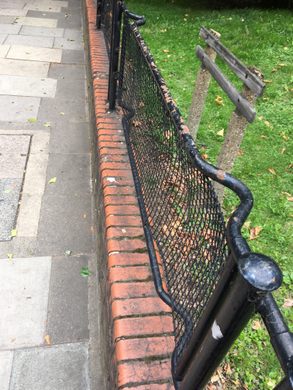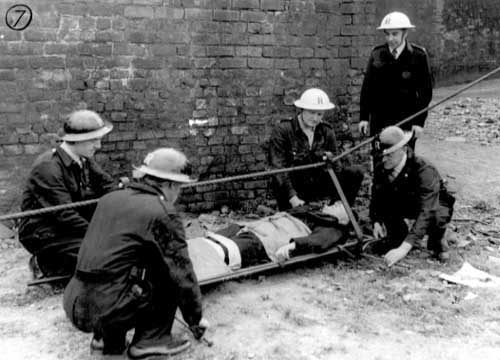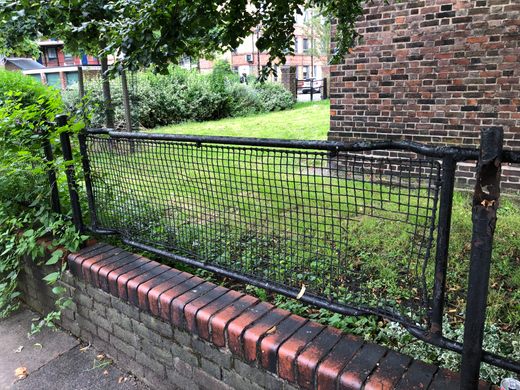London's Stretcher Railings
The fences outside some of South London's estates are made from recycled World War II stretchers.
Black steel and mesh railings line various estates within London. Though the architectural oddities look like strange pieces of post-war architecture, they once served a vital purpose.
These fences were originally emergency stretchers used by Air Raid Protection officers. The officers would put those injured during the Blitz onto the stretchers and carefully haul them off toward safety.
It’s clear that the government anticipated such medical equipment would be needed, as more than half a million stretchers were produced in the years before World War II began. The stretchers, which were no more than two steel poles flanking a stretch of wire mesh, were quick to mass produce. They were also easier to clean than conventional wood or canvas stretchers.
During the war, many of London’s housing estates lost their original metal railings when they were manufactured into weaponry to serve the war effort. With a large stockpile of stretchers following the war, the London City Council decided to have the stretchers welded vertically together, fixed onto poles, sunken into concrete, and used to replace this missing fencing. The two kinks in the poles, designed so that they could be rested on the ground then picked up easily, can still be seen on the railings today.
Know Before You Go
The railings are alongside Becket House between Becket Street and Pilgimage Street on Tabard Street.
The nearest tube station is Borough.
Access is level and the railings can be seen at any time.
The Stretcher Railing Society campaigns for the promotion, protection, and preservation of London's Stretcher Railings, they can be found on their website and on X. This location is a three-minute walk away from the Hanky Place railings also.

















Follow us on Twitter to get the latest on the world's hidden wonders.
Like us on Facebook to get the latest on the world's hidden wonders.
Follow us on Twitter Like us on Facebook